Abstract
Steroid spin labels have been found to undergo rapid and sometimes anisotropic rotational motion in membranes and phospholipid vesicle preparations. N-oxyl-4′,4′-dimethyloxazolidine derivatives of 5α-androstan-3-one-17β-ol, 5β-androstan-3-one-17β-ol, and 5α-androstan-3-one were prepared according to the procedure described by Keana. The paramagnetic five-membered ring is rigidly attached to the steroid nucleus at the 3-position, and thus the resonance spectrum of the nitroxide group reflects the motion of the entire steroid nucleus. This rapid motion, with rotational diffusion frequencies of the order of 107 to 108 second-1 is considered to lend plausibility to models of membrane transport involving rotations and/or translations of carriers within the hydrophobic region of the membrane. The steroid spin labels also form a convenient class of probes for studying conformational changes in membranes, since (a) their resonance spectra often fall in the category of “intermediate immobilization,” which is most sensitive to small changes, and (b) these labels are quite soluble in a wide variety of membranes.
Full text
PDF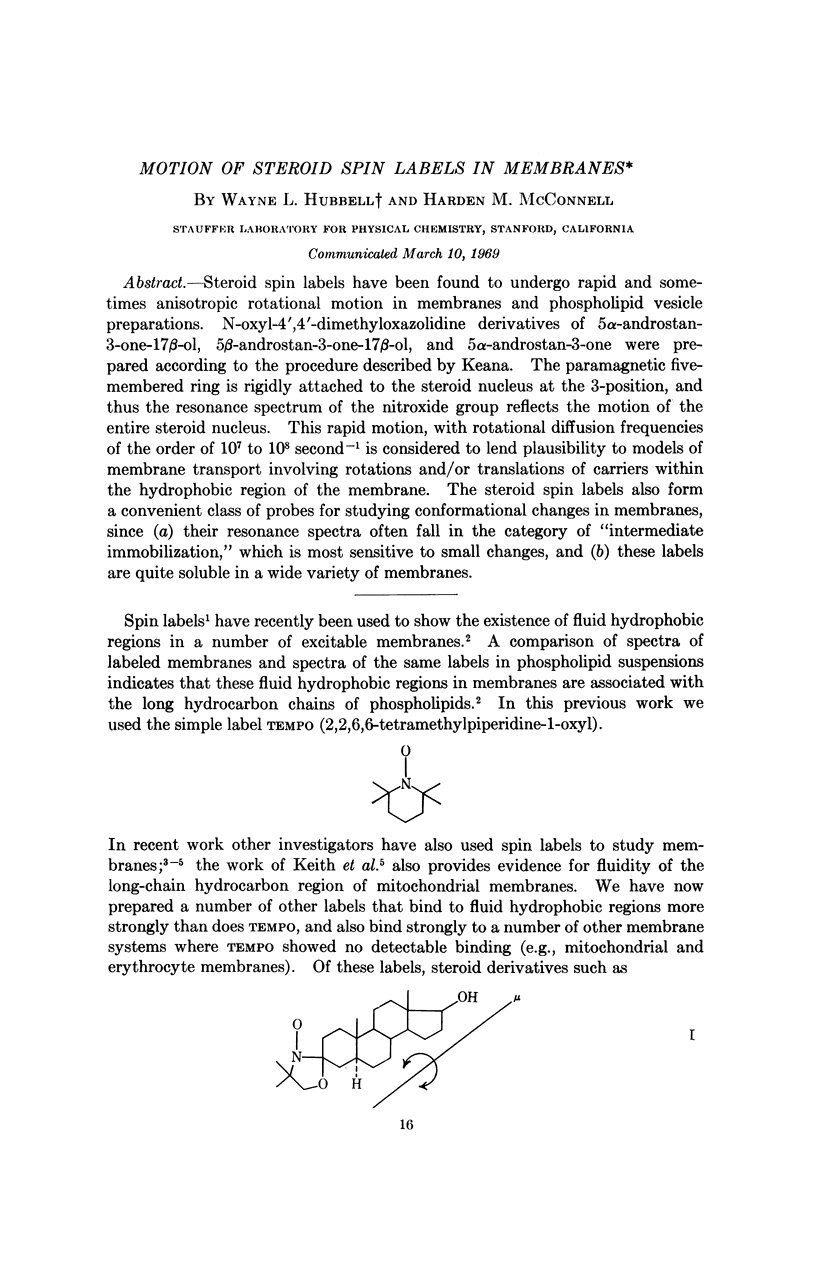
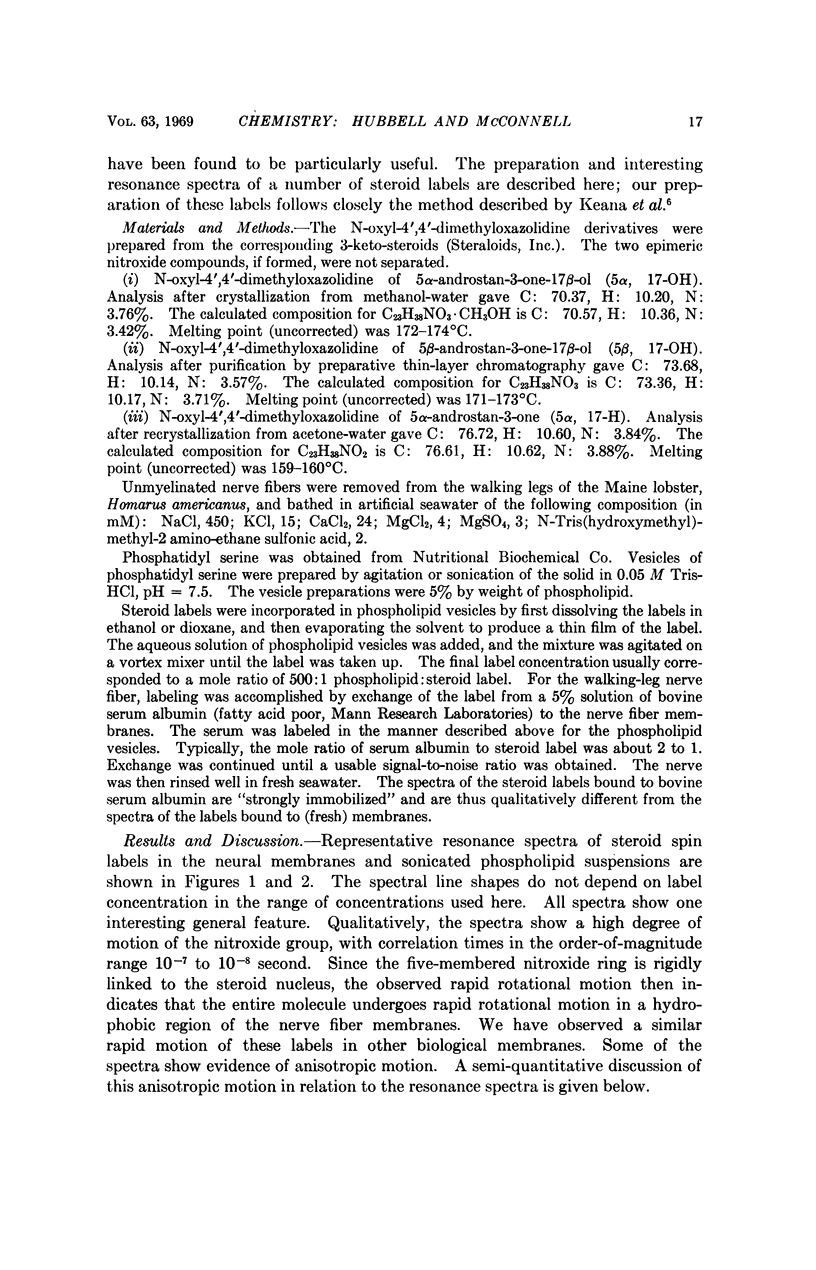
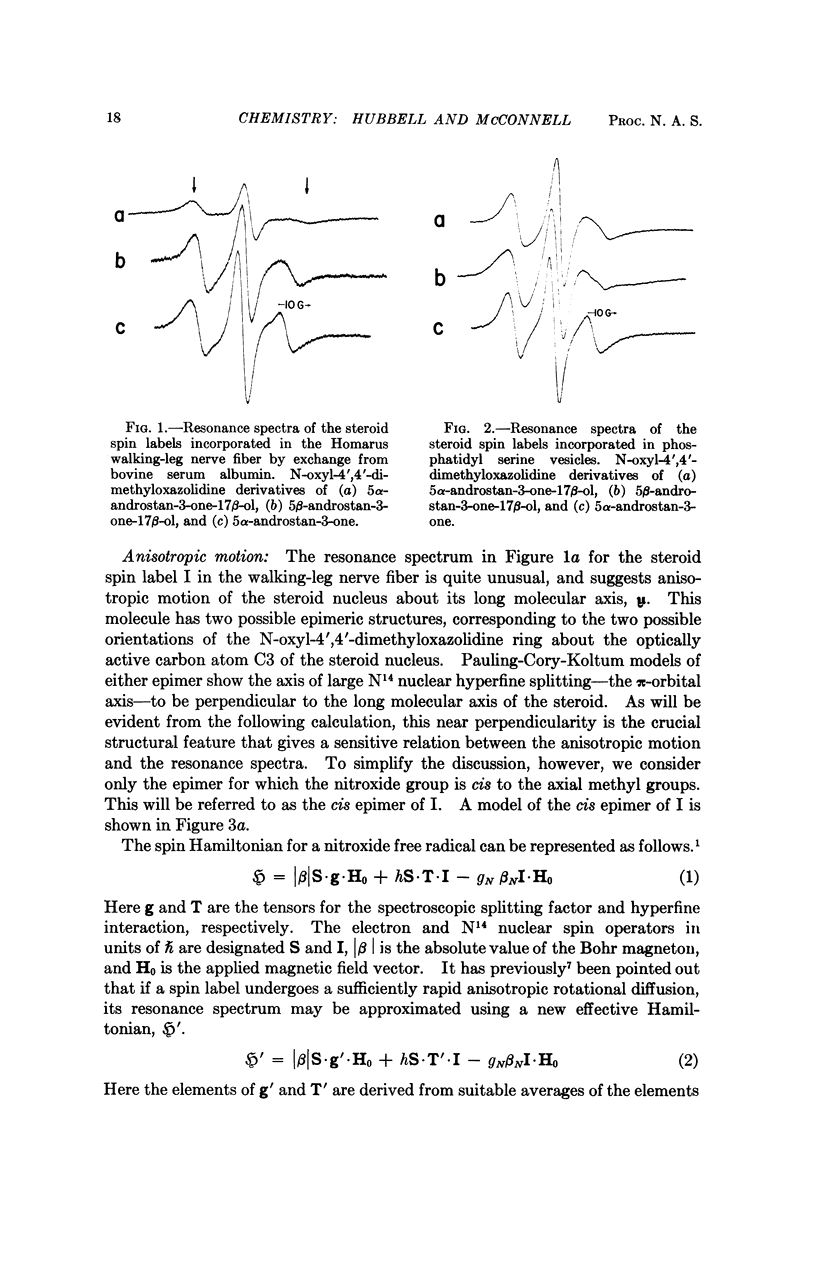
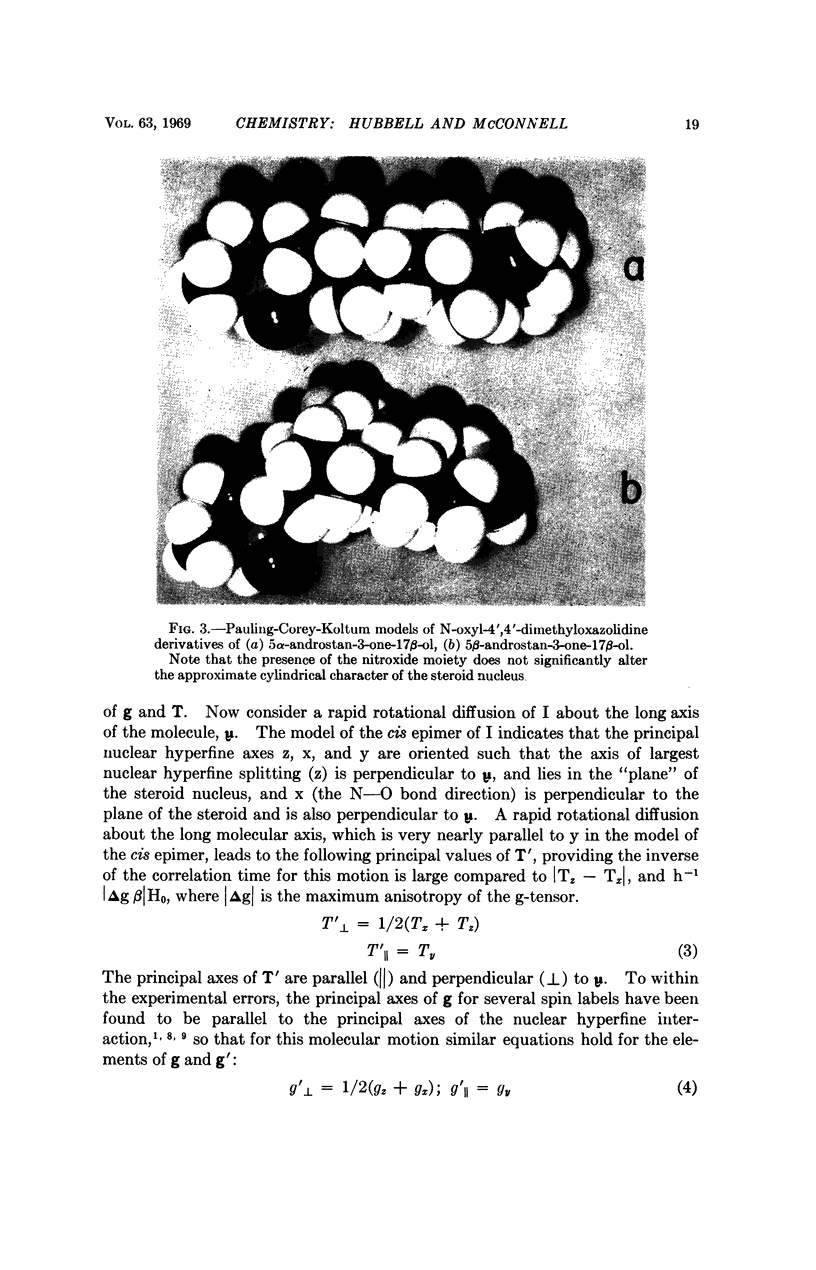
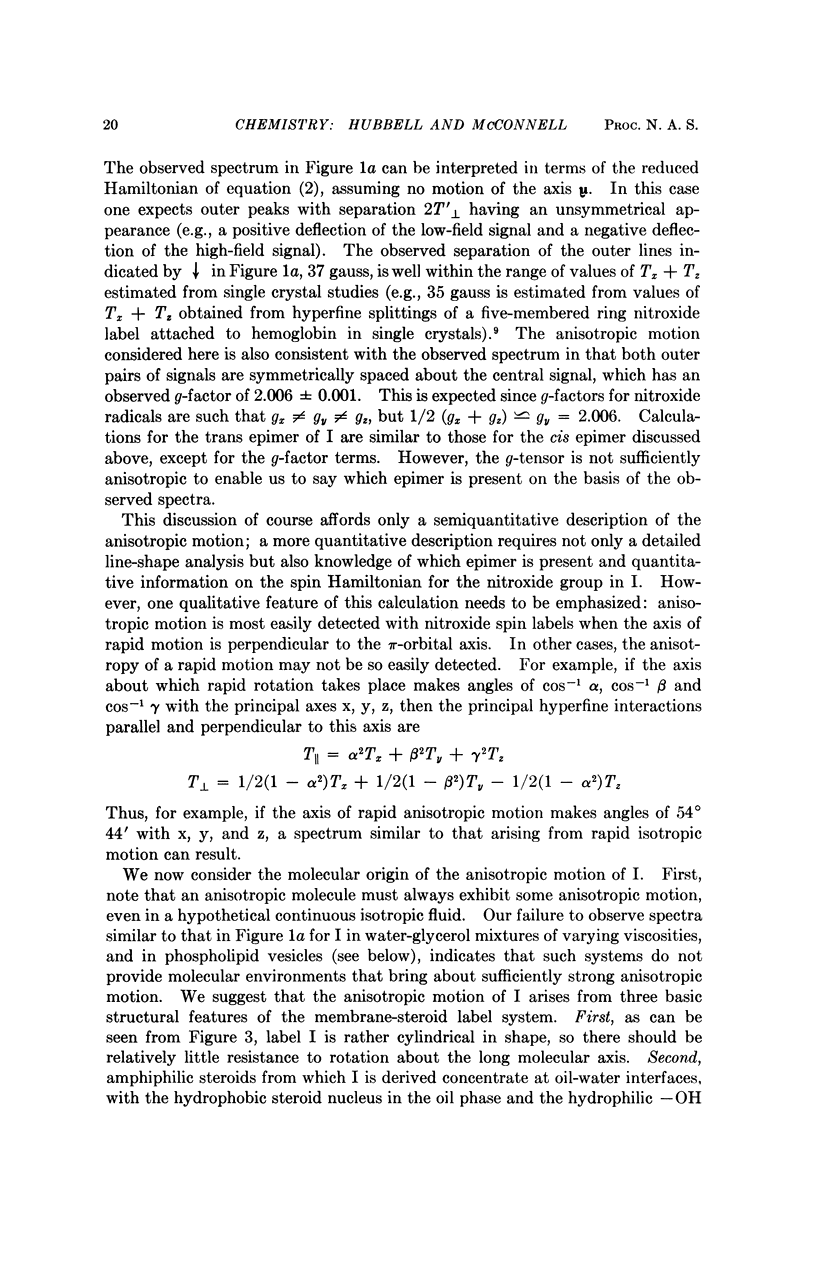
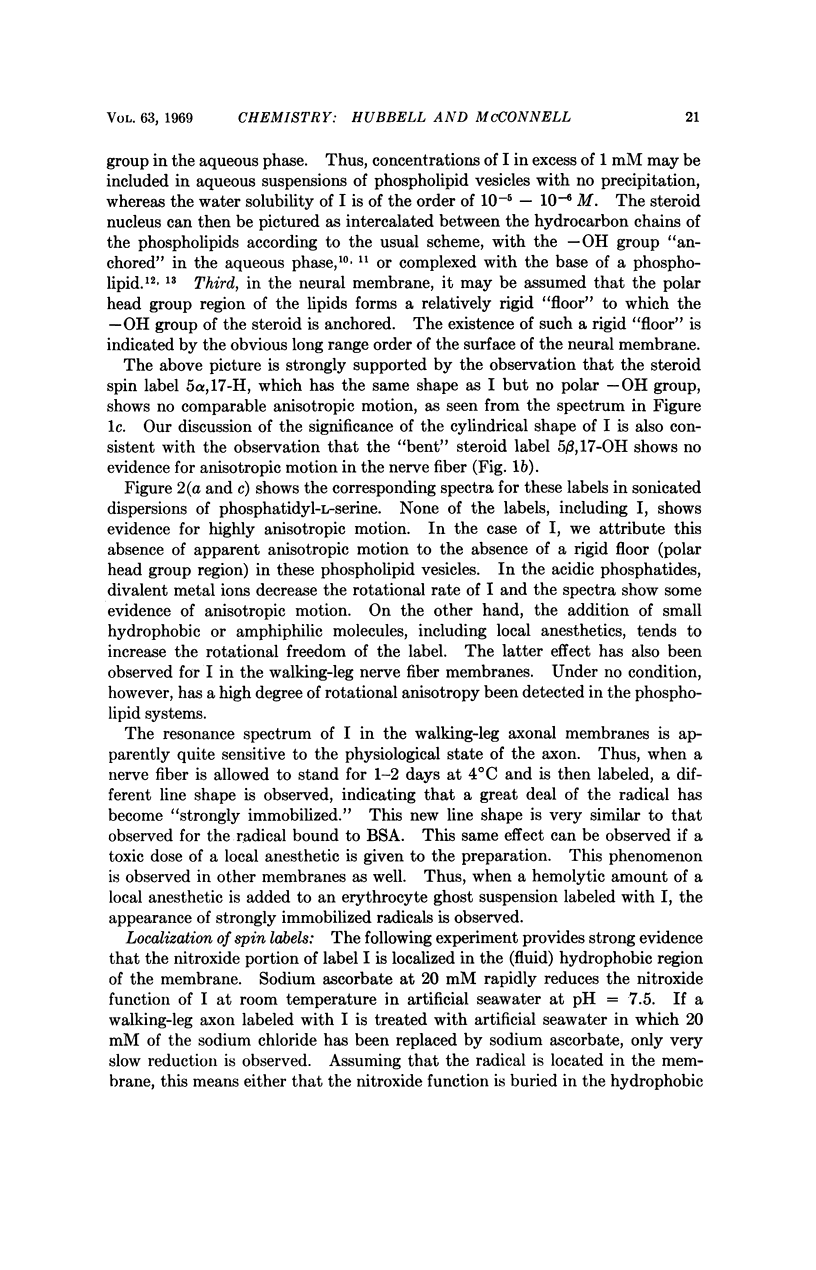
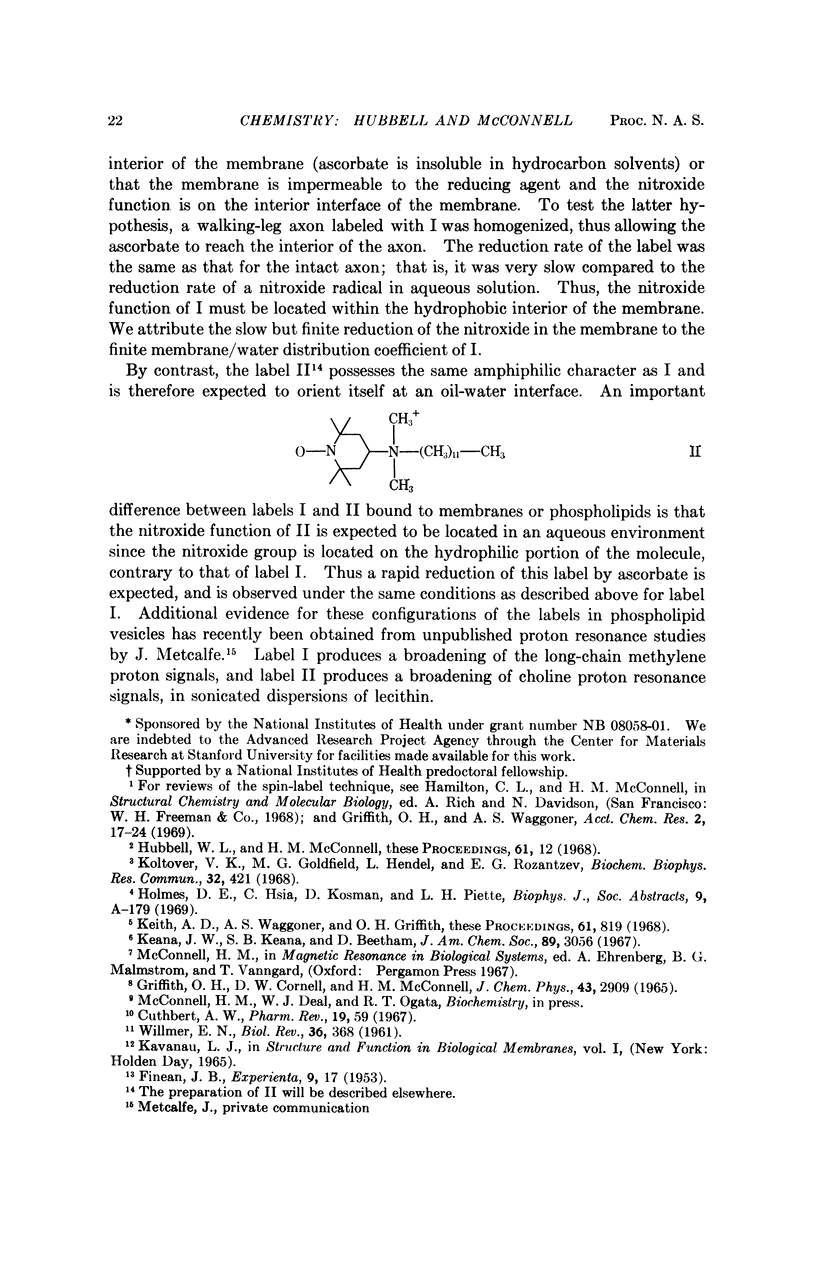
Images in this article
Selected References
These references are in PubMed. This may not be the complete list of references from this article.
- Cuthbert A. W. Membrane lipids and drug action. Pharmacol Rev. 1967 Mar;19(1):59–106. [PubMed] [Google Scholar]
- FINEAN J. B. Phospholipid-cholesterol complex in the structure of myelin. Experientia. 1953 Jan 15;9(1):17–19. doi: 10.1007/BF02147697. [DOI] [PubMed] [Google Scholar]
- Hubbell W. L., McConnell H. M. Spin-label studies of the excitable membranes of nerve and muscle. Proc Natl Acad Sci U S A. 1968 Sep;61(1):12–16. doi: 10.1073/pnas.61.1.12. [DOI] [PMC free article] [PubMed] [Google Scholar]
- Keith A. D., Waggoner A. S., Griffith O. H. Spin-labeled mitochondrial lipids in Neurospora crassa. Proc Natl Acad Sci U S A. 1968 Nov;61(3):819–826. doi: 10.1073/pnas.61.3.819. [DOI] [PMC free article] [PubMed] [Google Scholar]
- Koltover V. K., Goldfield M. G., Hendel L. Y., Rozantzev E. G. Conformational transition in biological membrane studyed by the spin label method. Biochem Biophys Res Commun. 1968 Aug 13;32(3):421–425. doi: 10.1016/0006-291x(68)90678-5. [DOI] [PubMed] [Google Scholar]
- WILLMER E. N. Steroids and cell surfaces. Biol Rev Camb Philos Soc. 1961 Aug;36:368–398. doi: 10.1111/j.1469-185x.1961.tb01295.x. [DOI] [PubMed] [Google Scholar]



